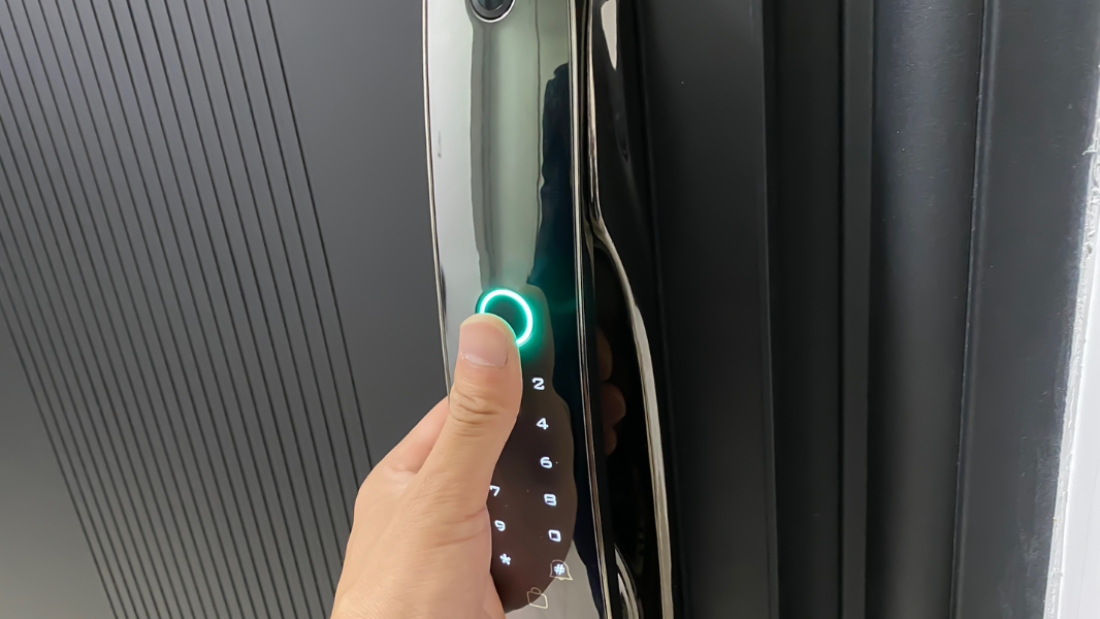In the world of video editing, real-time background matting is a game-changer. Say goodbye to tedious post-production work and hello to instant, seamless editing. This revolutionary technology allows you to effortlessly separate your subject from the background in real-time, saving you time and effort like never before. With real-time background matting, you can achieve professional-looking videos with ease, whether you’re a seasoned editor or just starting out. Embrace the power of cutting-edge tools that bring your creativity to life without the hassle. Get ready to elevate your editing game and stand out from the crowd with this innovative solution.
Understanding Real-Time Background Matting
Definition and Significance
Real-time background matting is the process of separating foreground subjects from backgrounds in videos or images instantly. It plays a crucial role in digital media by enhancing visual effects and enabling dynamic background changes without post-production delays.
With real-time background matting, creators can achieve accurate foreground extraction and seamless integration of subjects into various virtual environments. This technology significantly simplifies editing tasks, making it more efficient for content producers to enhance their projects.
Process of Separating Foreground Subjects
In real-time background matting, the algorithm analyzes each frame to identify the foreground subject and differentiate it from the background. By leveraging advanced techniques such as machine learning and computer vision, the system generates reliable mattes that accurately outline the subject for further manipulation.
The process involves continuously updating the matte to ensure precise separation, even with moving subjects. This dynamic adjustment allows for robust video matting that maintains quality and consistency throughout the footage.
Applications in Video Production
Real-time background matting finds extensive applications in video production and streaming services. Content creators can use this technology to produce high-quality visual effects, such as adding virtual backgrounds or altering scenes in real-time.
By incorporating background matting into their workflow, filmmakers can streamline the editing process and experiment with different backgrounds without extensive post-production efforts. This capability is particularly valuable in scenarios where quick turnaround times are essential, such as live broadcasts or online streaming events.
Importance of Seamless Integration
Smooth Integration
Smooth integration of real-time background matting technology is crucial for its successful implementation. It ensures that the software seamlessly scales video processing without compromising performance. The compatibility between the matting software and existing hardware plays a vital role in achieving optimal results.
Efficient integration allows users to leverage advanced features while maintaining stability and reliability. This seamless process enables organizations to incorporate real-time background matting into their workflows without disruptions. By ensuring compatibility, users can experience enhanced efficiency and productivity in their video editing tasks.
User-Friendly Interfaces
User-friendly interfaces are essential components that contribute to the overall usability of real-time background matting solutions. These interfaces simplify the interaction between users and the matting software, making it easier to navigate through various settings and options. Intuitive interfaces enhance the user experience by providing clear instructions and visual cues.
The presence of user-friendly interfaces facilitates a smooth learning curve, allowing both novice and experienced users to utilize the technology effectively. By prioritizing usability, developers can create interfaces that cater to a wide range of users, thereby increasing adoption rates and overall satisfaction.
Compatibility Issues
Despite the benefits of seamless integration, compatibility issues may arise during the implementation of real-time background matting technology. These issues can stem from software conflicts, hardware limitations, or outdated systems. Addressing compatibility challenges requires thorough testing and troubleshooting to ensure optimal performance.
Compatibility issues can impact the functionality of the matting software, leading to inefficiencies and errors in video processing. Organizations must conduct comprehensive compatibility assessments before integrating new technology to identify potential issues and mitigate risks. By proactively addressing compatibility concerns, users can avoid disruptions and maintain workflow continuity.
Current Use in Mobile Apps
Video Calls
Mobile apps have integrated real-time background matting to enhance video calls. This technology enables users to blur or replace their background during video conversations. Users can choose from a variety of virtual backgrounds, creating a professional or fun setting for their calls.
ial Media Integration Real-time background matting has revolutionized content creation tools on social media platforms. Users can now easily edit and manipulate their backgrounds in real time, adding creativity and uniqueness to their posts. This feature has significantly improved the quality of visual content shared on social media.
Augmented Reality
Augmented reality (AR) features in mobile apps have gained immense popularity due to background matting technology. AR filters and effects seamlessly blend with the user’s environment, providing an interactive and engaging experience. Users can try on virtual outfits, experiment with different backgrounds, and create captivating AR content effortlessly.
Pros:
Enhances user experience in video calls and social media platforms.
Provides creative opportunities for content creators.
Boosts engagement through interactive AR features.
Cons:
Requires significant processing power, impacting device performance.
Privacy concerns related to background manipulation in video calls.
Key Technologies Behind Background Matting
Algorithms and Models
Background matting relies on advanced image matting techniques and deep image matting models for accurate background removal. These algorithms analyze pixel values to separate foreground objects from the background. Image matting algorithms such as deep learning-based models have significantly improved the quality of mattes, enhancing the overall accuracy of the process.
Computer Vision Techniques
Computer vision plays a crucial role in enhancing the accuracy and speed of background matting. By leveraging computer vision techniques, such as semantic segmentation and object recognition, the algorithms can precisely identify and extract foreground objects from complex backgrounds. This results in quality alpha matte generation, preserving intricate details like hair strands in portrait matting.
Hardware Advancements
Recent advancements in hardware have facilitated efficient real-time processing of background matting tasks. Graphics processing units (GPUs) are extensively used to accelerate the computation-intensive matting process. The integration of GPUs in devices enables resolution background replacement techniques, allowing users to seamlessly replace backgrounds in videos or images with minimal delay.
Benefits to User Experience
Visual Quality
Real-time background matting significantly enhances visual quality in video communications by seamlessly separating the subject from the background. This technology operates at 60fps, ensuring smooth and high-definition (HD 60fps) video streams. The precise extraction of the subject allows for a crisp, clear presentation, making the overall viewing experience more immersive.
Personalization Options
Users can personalize their video calls through a variety of customizable backgrounds, adding a touch of creativity and individuality to their virtual interactions. By integrating real-time background matting, individuals can choose backgrounds that reflect their personality or mood, creating a unique atmosphere for each conversation. This feature not only adds fun and excitement but also helps users express themselves in a visually engaging manner.
Distraction Reduction
One of the key benefits of real-time background matting is the reduction of distractions during video calls. By eliminating cluttered or unprofessional backgrounds, this technology ensures that the focus remains on the subject, promoting clearer communication and enhancing engagement. With distractions minimized, both presenters and viewers can concentrate better on the content being shared, leading to more effective and impactful virtual meetings.
Overcoming Technical Challenges
Common Hurdles
Real-time background matting faces technical challenges related to resolution processing capabilities and GPU limitations. Achieving high-quality results requires efficient utilization of processing power.
Background matting involves complex algorithms that demand significant memory usage. Ensuring smooth performance while maintaining high resolution refinement can be a daunting task.
Optimization Strategies
To optimize processing power, developers must focus on streamlining algorithms for faster execution. Utilizing parallel computing techniques can enhance performance significantly.
Efficient memory management is crucial for handling large resolution videos effectively. Implementing video encoding and conversion scripts can help reduce memory overhead.
Enhancing Accuracy
Improving accuracy in diverse lighting conditions is vital for a seamless user experience. Advanced algorithms can adapt to varying lighting scenarios, ensuring consistent results.
Utilizing deep learning models can enhance accuracy by analyzing pixel-level details and refining mattes accordingly. This approach enables precise foreground extraction even in challenging environments.
Pros and Cons
Pros:
Enhanced processing speed
Improved memory utilization
Cons:
Complex algorithm implementation
High computational requirements
Case Studies and Examples
Successful Implementations
Real-time background matting has revolutionized various applications, showcasing its prowess in delivering seamless user experiences. One notable case study is the integration of this technology in video conferencing platforms like Zoom and Microsoft Teams. By accurately separating the speaker from the background in real-time, users can enjoy a professional-looking virtual background without the need for physical green screens.
User Feedback and Performance Metrics
User feedback on real-time background matting implementations has been overwhelmingly positive, with many praising the technology for its ability to enhance video quality and overall aesthetics. Performance metrics have shown significant improvements in video call engagement and viewer retention rates when background matting is utilized. This indicates a clear preference among users for a polished and distraction-free visual experience.
Pros:
Enhances user experience
Improves video call engagement
Boosts viewer retention rates
Cons:
Requires robust hardware for optimal performance
May encounter occasional glitches in complex backgrounds
Innovative Uses in Creative Industries
The creative industries have embraced real-time background matting for a myriad of innovative purposes. One striking example is its application in live streaming platforms for content creators and influencers. By seamlessly replacing backgrounds in real-time, creators can transport their audience to different virtual settings, enhancing storytelling and visual appeal.
Video Production: Real-time background matting has streamlined the video production process by eliminating the need for extensive post-production editing. Content creators can now achieve professional-grade results directly during filming, saving time and resources.
Virtual Events: In the era of remote gatherings, real-time background matting has become a game-changer for hosting virtual events. Whether it’s a corporate webinar or an online concert, the technology allows presenters to maintain a consistent branding aesthetic effortlessly.
Future Trends and Predictions
AI Advancements
Real-time background matting is poised to benefit significantly from advancements in AI and machine learning. With the continuous development of technologies like TensorFlow and the utilization of modern GPUs, we can anticipate more efficient algorithms that enable seamless and precise matting processes. These advancements will not only enhance the speed of matting but also improve the overall quality of the extracted foreground objects.
User Expectations
As technology progresses, user expectations regarding background quality and customization are likely to evolve. Users will demand higher accuracy in separating foreground elements from backgrounds in real-time, pushing for smoother edges and better integration with varying lighting conditions. Moreover, there will be a growing desire for customization options, allowing users to personalize their background settings according to their preferences.
Industry Adoption
The future of real-time background matting extends beyond entertainment industries, paving the way for widespread adoption across various sectors. Industries such as virtual events, e-commerce, and video conferencing are expected to leverage this technology for enhancing user experiences and streamlining workflows. For instance, in virtual events, real-time matting can facilitate dynamic backgrounds, creating immersive environments for participants.
Best Practices for Developers
User Interface
Developers focusing on real-time background matting should prioritize user interface design. A well-designed interface enhances accessibility and ease of use for video editors. Simplified controls and intuitive layouts can streamline the editing process.
Compatibility Testing
Testing across multiple devices is crucial for ensuring compatibility and performance. Video editors rely on seamless functionality regardless of the device they use. Conducting thorough tests helps identify and address any potential issues early on.
Continuous Updates
To stay ahead in the dynamic landscape of real-time background matting, developers must prioritize continuous updates and improvements. By incorporating user feedback and staying abreast of technological advancements, developers can enhance the software’s capabilities and address emerging needs effectively.
Closing Thoughts
Real-time background matting is revolutionizing user experiences in mobile apps by seamlessly integrating advanced technologies to deliver impressive results. Understanding the importance of this innovation, developers can harness key technologies to overcome technical challenges and enhance user engagement significantly. By exploring case studies and examples, you can grasp the practical applications and envision future trends in this dynamic field.
As you delve into real-time background matting, remember to apply best practices to optimize performance and user satisfaction. Embrace these advancements to stay ahead in the ever-evolving landscape of mobile app development. Start implementing these strategies today to create immersive and compelling user interactions that set your apps apart from the competition.
Frequently Asked Questions
What is real-time background matting?
Real-time background matting is a technology that allows for the separation of foreground subjects from the background in live video streams or images, enabling applications like virtual backgrounds and augmented reality effects.
Why is seamless integration important for background matting?
Seamless integration ensures a natural and realistic appearance of the separated foreground subject within various applications, enhancing user experience and making the visual effects more convincing and engaging.
How are key technologies utilized in background matting?
Key technologies such as deep learning, neural networks, and image segmentation algorithms are employed to accurately distinguish foreground elements from the background in real-time, providing precise results for a variety of use cases.
What benefits does background matting offer to user experience?
Background matting enhances user experience by enabling immersive virtual backgrounds, personalized content creation, and interactive AR effects in mobile apps and video conferencing platforms, leading to increased engagement and user satisfaction.
What technical challenges are typically overcome in background matting?
Technical challenges include real-time processing constraints, accurate object segmentation, lighting variations, and edge refinement issues. Advanced algorithms and optimizations are implemented to address these challenges and improve the quality of background matting results.
Can you provide examples of successful case studies involving background matting?
Successful case studies include video conferencing apps implementing virtual backgrounds, photo editing tools offering instant background removal, and social media platforms integrating augmented reality filters for user-generated content, showcasing the diverse applications and popularity of background matting technology.
What are some future trends and predictions for background matting technology?
Future trends may involve enhanced AI-driven algorithms for improved accuracy, integration with AR glasses for real-world applications, and expanded use in e-commerce for virtual try-on experiences, indicating a growing influence of background matting across various industries.









